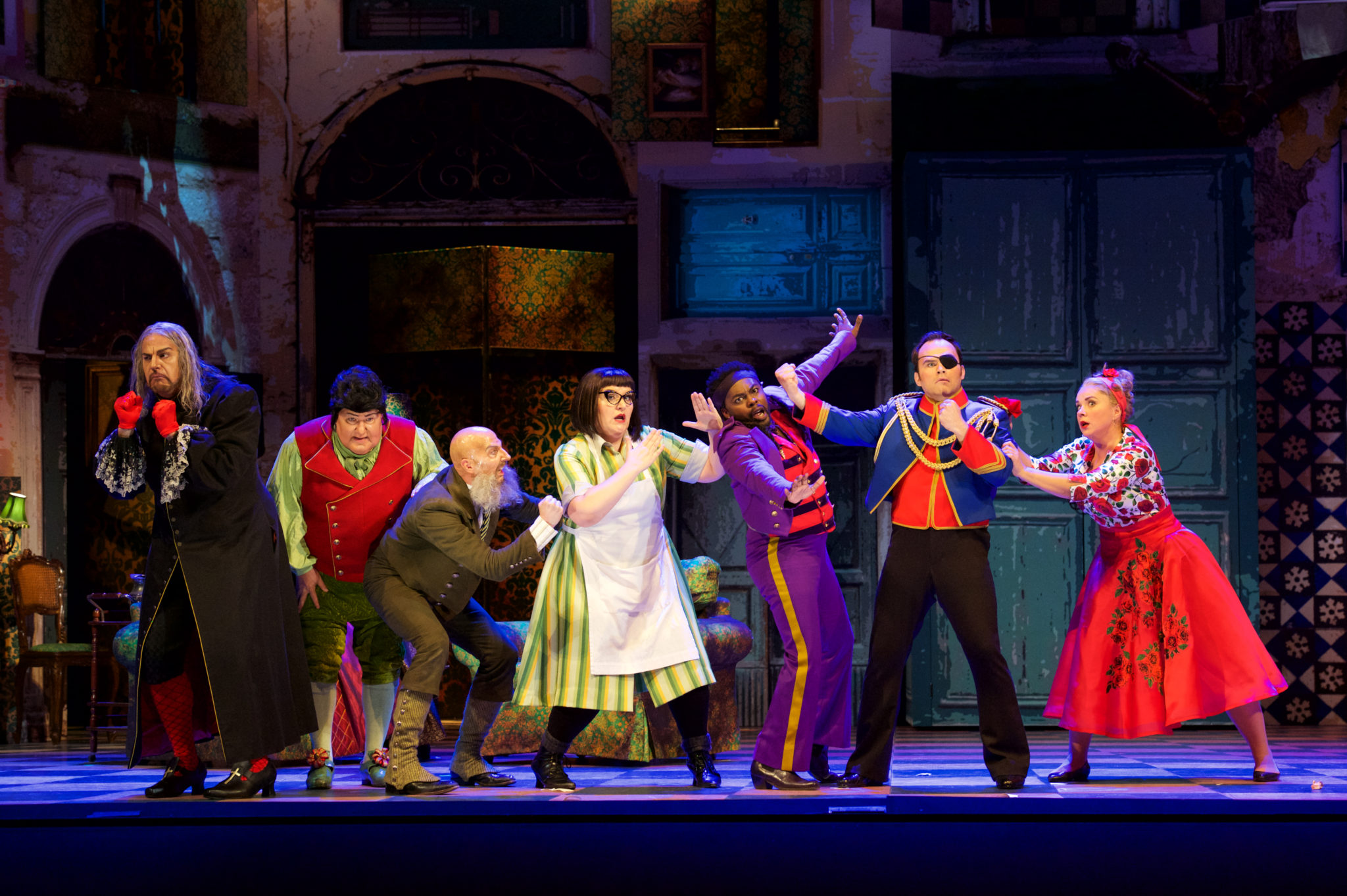
I think The Barber of Seville might be my favorite opera. The only thing that detracted from my enjoyment when I watched it last weekend was that every scene made me think, “I wish I’d brought my kids.” Because every single scene is so delightful, so funny, so beautiful, I hated for them to miss it. Even though my kids have already been to the opera before, I left determined to come back with them before the production finishes.
There is so much going on in the Barber of Seville, it’s hard to keep it all straight. Even the history of the opera is convoluted: Rossini composed the Barber of Seville as a prequel to The Marriage of Figaro, an opera written by Mozart 30 years earlier. Both operas were written in Italian based on a series of plays written in French between 1775-1791 that followed the adventures of Figaro, a Spaniard who’s nominally a barber but in practice a jack-of-all trades bordering on con man.
In the Barber of Seville, Figaro helps an aristocrat woo a middle-class maiden against the wishes of her corrupt guardian through a series of ridiculous pranks and disguises. Thematically, the opera deals with the generation gap and the triumph of young over old; the decline of the aristocracy and the rise of capitalism; and of course, the course of true love.
All of these things can contribute to one’s understanding and enjoyment of the opera, but none of them are necessary. Everything you need to enjoy The Barber of Seville is sitting right on the surface, easily accessible for everyone. The music is beautiful, immediate and engaging. The main character’s opening aria is arguably the most famous piece of music in the world, performed in this production by barihunks Will Liverman and John Moore. (I’ve been crushing on Liverman since Count Ory and can’t wait to see him at Seattle Opera again.)
And it’s funny. The aria, and the rest of the opera. Really, laugh out loud funny. Presaging the patter songs of Gilbert and Sullivan, even baritones and basses in Rossini’s opera keep up the pace with frenetic energy. But despite rising to the challenges of the music, this production has incredible comedic acting.
Everyone is a little bit ridiculous in The Barber of Seville, from Kevin Glavin’s Dr. Bartolo and Daniel Sumegi’s shifty music teacher Basilio to Count Almaviva himself. Tenor Andrew Owens (whose acting chops stood out in Mary Stuart, too) gleefully abandoned the dignity of a handsome romantic lead to completely inhabit each of Almaviva’s silly disguises – starving student, drunk soldier, craven music instructor.
Then there’s the background antics of the household servants, nerdy Berta (I wish we could have heard more from mezzo Margaret Gawrysiak) and ancient Ambrogio (a completely silent role peformed by Juilliard-trained burlesque star Marc Kenison/Waxie Moon) who resembles the boiler-room operator from Spirited Away and ends up hanging from a chandelier.
If anyone comes out with any dignity, it is the spunky heroine Rosina, sung with crystalline clarity by soprano Sofia Fomina (and Sabina Puertolas, whom I didn’t see). Rosina’s willingness to fight dirty to get what she wants out of life when the deck is stacked against her is a refreshing change from the sappy, suicidal heroines of Puccini.
The chaos and comedy of the plot is complemented by the production. With inspirations that range from Laugh In to Pedro Almodovar, the set consists almost entirely of doors.
The anachronistic costumes span the 200-year history of the opera, with shapes that range from a priest’s cassock to a poodle skirt. The Spanish setting is acknowledged Figaro’s costume, which is best described as “Prince playing matador,” and in a flamenco finale (which is so much more engaging than the standard chorus finale with everyone standing still facing the audience).
As soon as I got home, I looked up ticket prices for the remaining shows. Then I checked my schedule and realized my family was already booked during every single remaining performance except for the Sunday Family Matinee.
Sunday, October 22, 2017 at 2:00 PM students age 18 and under pay only $15 for almost any seat, but already, most of the remaining seats for adults were the expensive ones. Now the show is almost sold out – but it’s worth whatever you end up paying if you can still get tickets.







About the author